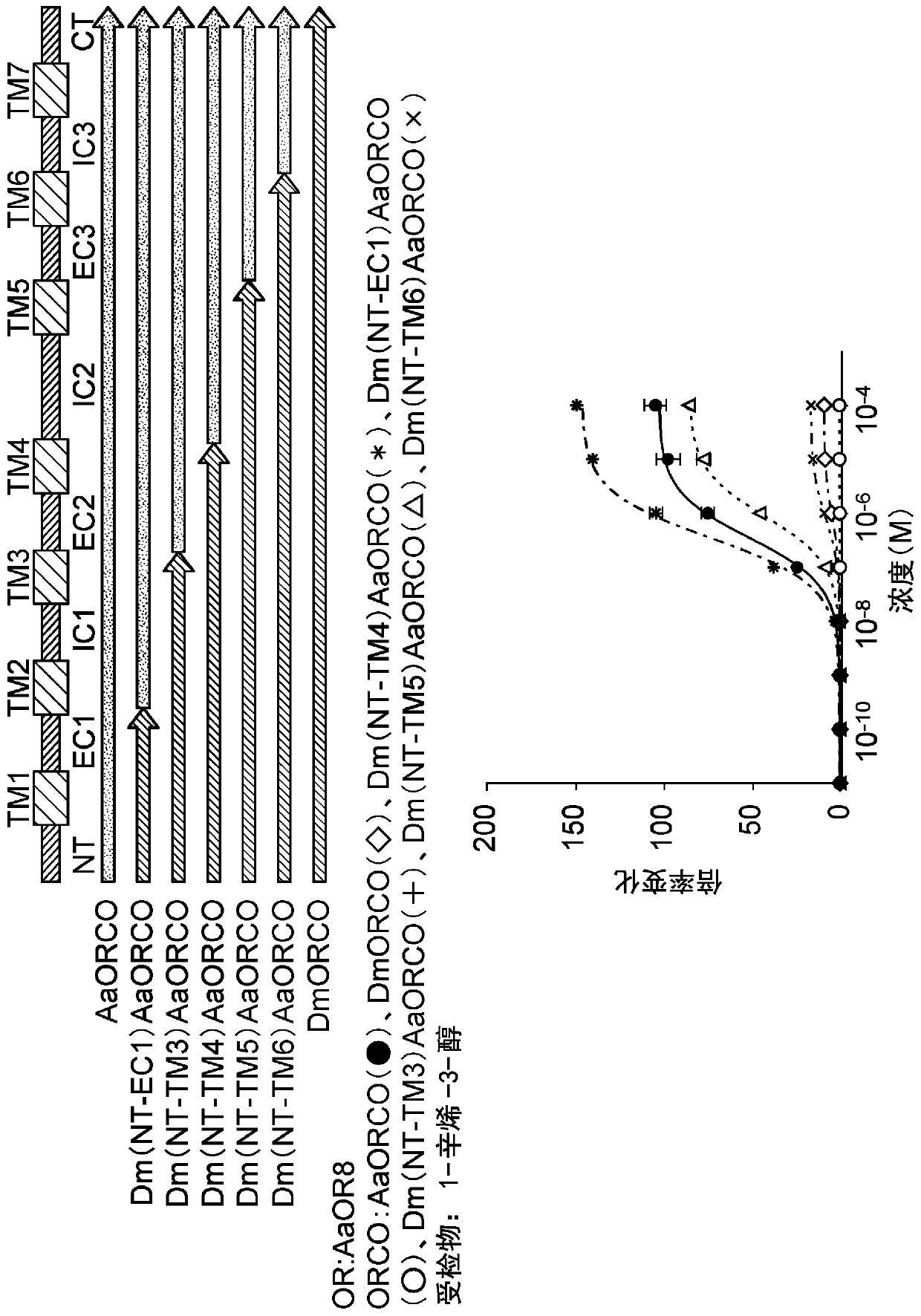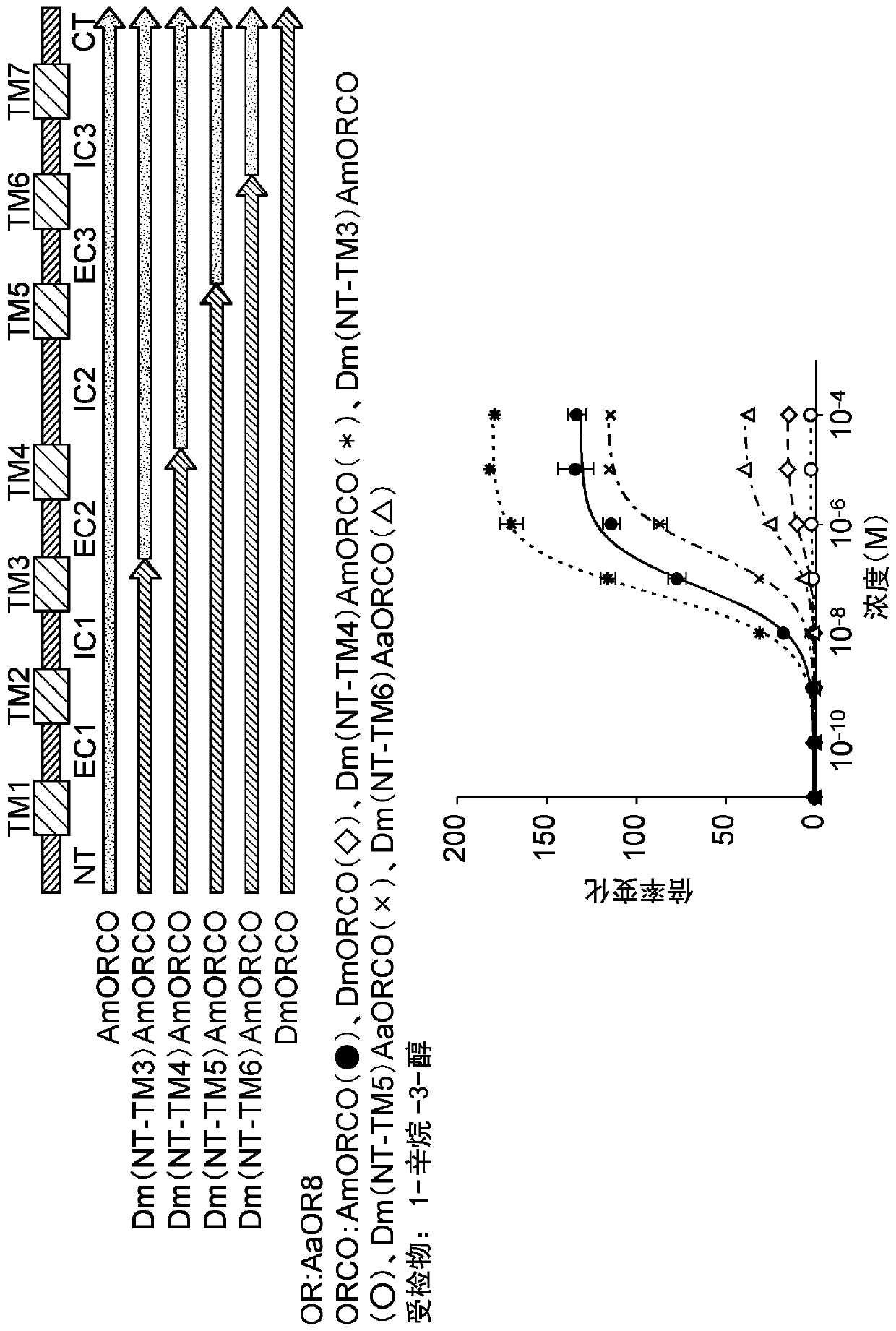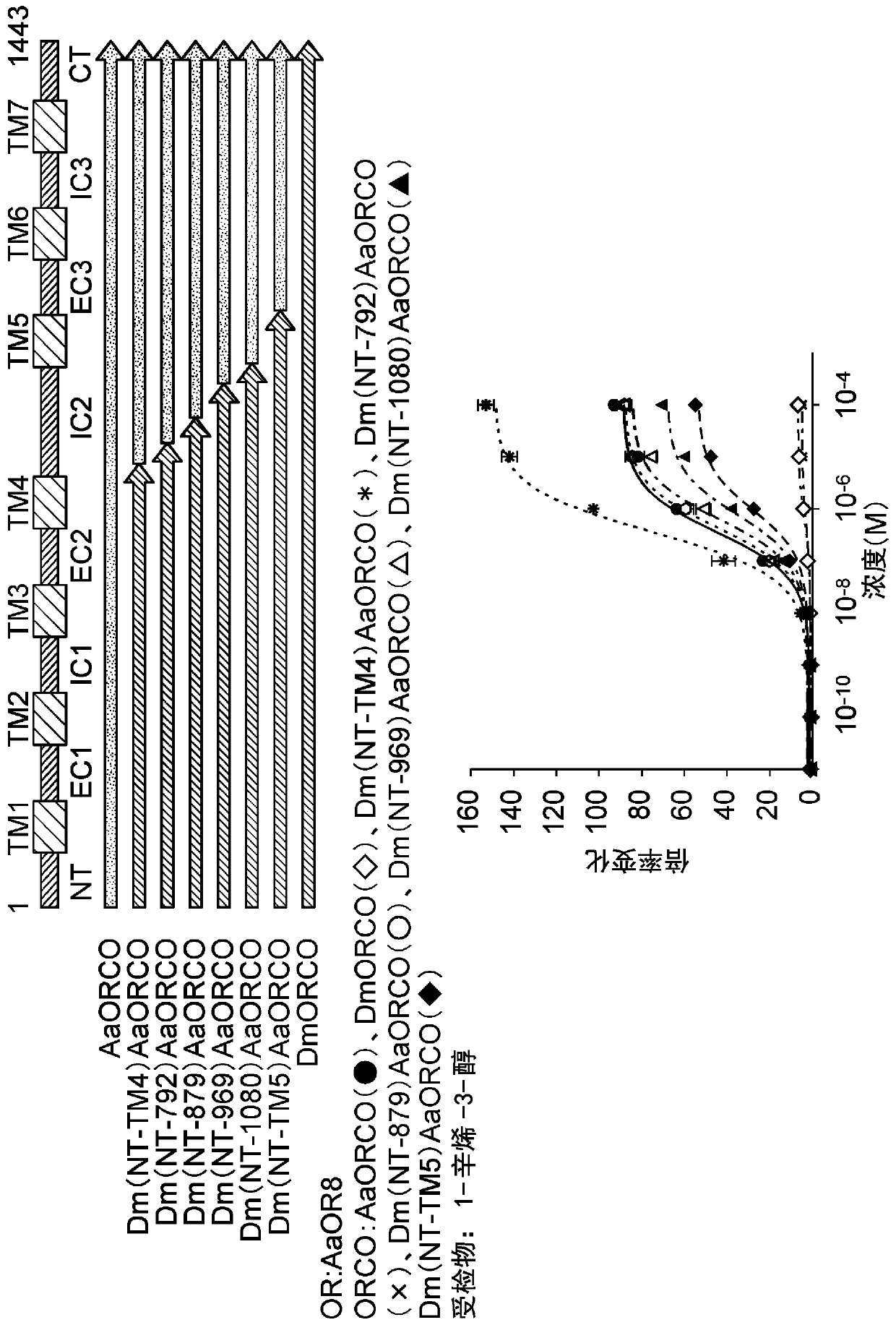Odorant receptor co-receptor
An olfactory receptor and a common technology, applied in the field of olfactory receptor co-receptors, can solve problems such as difficulty in long-term utilization and lack of stability, and achieve the effects of excellent detection sensitivity and excellent detection sensitivity.
- Summary
- Abstract
- Description
- Claims
- Application Information
AI Technical Summary
Problems solved by technology
Method used
Image
Examples
Embodiment
[0073] Hereinafter, the present invention will be specifically described based on examples. However, the present invention is not limited to the following examples.
[0074] Insects described in this example are as follows.
[0075] Anopheles gambiae: hereinafter also sometimes referred to as "Anopheles" or "Ag".);
[0076] Aedes aegypti (Aedes aegypti: hereinafter also sometimes referred to as "Aedes" or "Aa".);
[0077] Drosophila melanogaster (Drosophila melanogaster: hereinafter also sometimes referred to as "fruit fly" or "Dm".);
[0078] Apis mellifera (Apis mellifera: hereinafter also sometimes referred to as "bee" or "Am".);
[0079] Silkworm moth (Bombyx mori: hereinafter sometimes referred to as "silkworm" or "Bm".).
[0080]
[0081] Drosophila co-receptor (hereinafter sometimes referred to as "DmORCO") expression plasmid
[0082] Using Drosophila melanogaster imago RNA (manufactured by TAKARA) as a template, add Super Script III reverse transcriptase (manufa...
PUM
 Login to View More
Login to View More Abstract
Description
Claims
Application Information
 Login to View More
Login to View More - R&D
- Intellectual Property
- Life Sciences
- Materials
- Tech Scout
- Unparalleled Data Quality
- Higher Quality Content
- 60% Fewer Hallucinations
Browse by: Latest US Patents, China's latest patents, Technical Efficacy Thesaurus, Application Domain, Technology Topic, Popular Technical Reports.
© 2025 PatSnap. All rights reserved.Legal|Privacy policy|Modern Slavery Act Transparency Statement|Sitemap|About US| Contact US: help@patsnap.com



